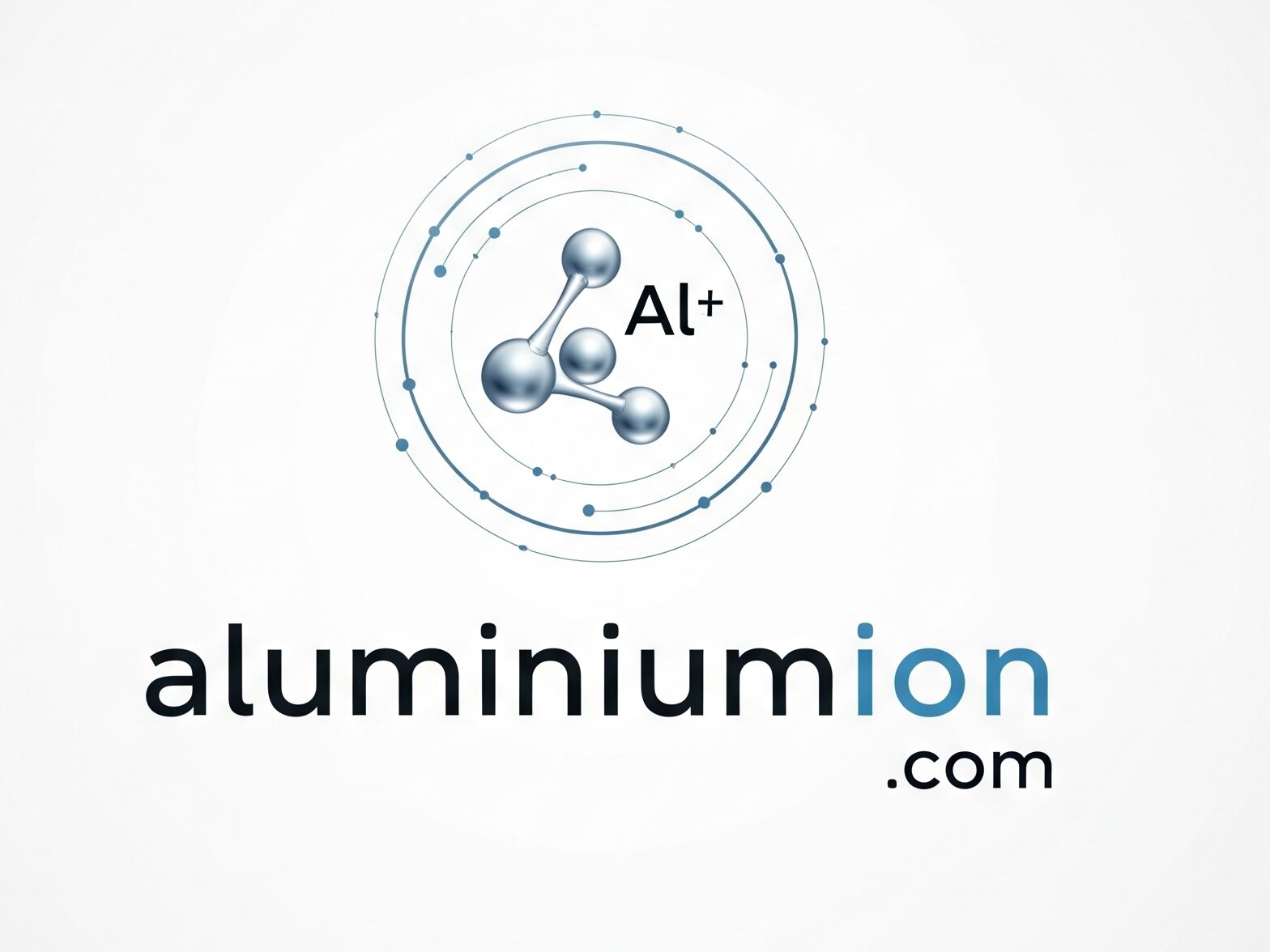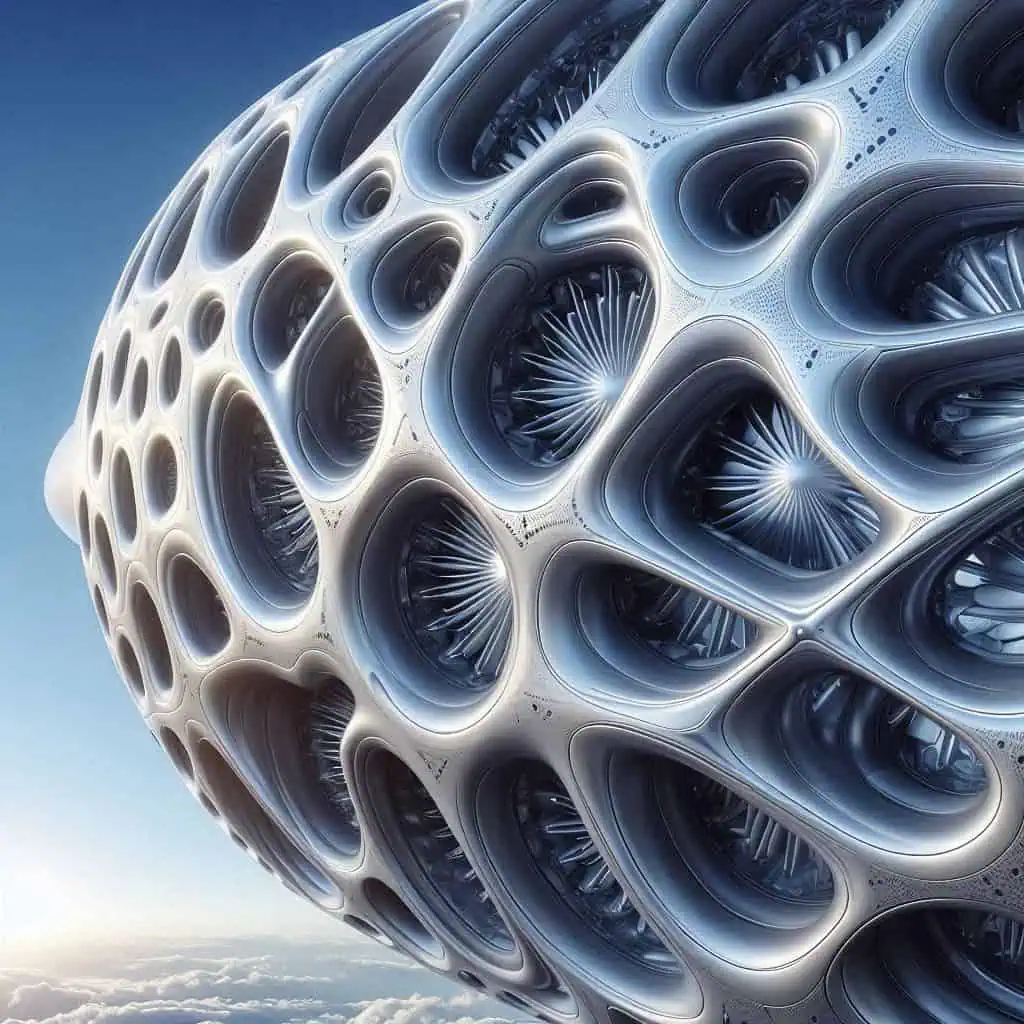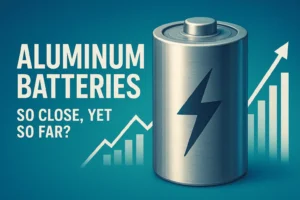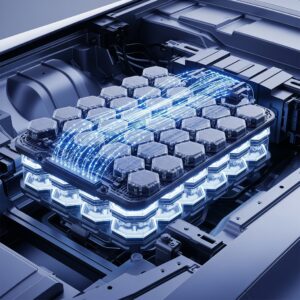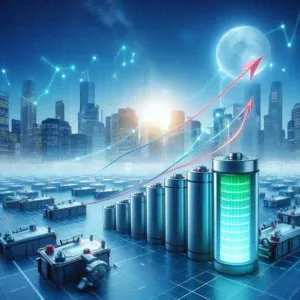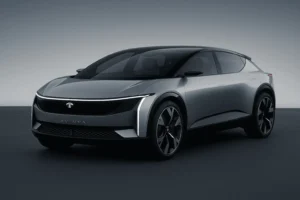Introduction: Painting with Electrons
Unlike the closed-loop chemistry of lithium-ion cells, aluminum-air (Al-air) batteries inhale oxygen to create energy, transforming metal and air into power like an artist turning pigments into a masterpiece.
The Art of Aluminum-Air Chemistry
How It Works: A Molecular Ballet
Al-air batteries operate through a simple yet elegant reaction:
- Anode: Aluminum metal → Al³⁺ + 3e⁻
- Cathode: Oxygen + water + electrons → OH⁻ ions
- Overall: 4Al + 3O₂ + 6H₂O → 4Al(OH)₃
Unlike lithium-ion’s closed-loop “studio painting,” Al-air systems are open-canvas installations, leveraging atmospheric oxygen as a free reactant.
Advantages Over Lithium-Ion: A Palette of Innovation
1. Energy Density: The Titan of Storage
- Lithium-ion: 250–300 Wh/kg (like acrylics—vibrant but limited)
- Aluminum-air: 1,300–8,000 Wh/kg (think oil paints—rich, layered, transformative)
Source: U.S. Department of Energy, 2023
Why It Matters:
- A single Al-air battery can power an EV for 1,800 km (Phinergy’s 2023 demo) vs. Tesla’s ~500 km.
- For grid storage, this means smaller physical footprints—critical for urban solar farms.
2. Material Abundance & Cost
| Material | Global Reserves | Cost ($/kg) |
|---|---|---|
| Lithium | 22 million tons | $70+ |
| Aluminum | 55 billion tons | $2.5 |
Aluminum is 2,500x more abundant than lithium.
- Economic Artistry: Al-air cells avoid pricey cobalt/nickel. A 2023 MIT study found Al-air systems cost 60/kWh∗∗vs.lithium−ion’s∗∗60/kWh∗∗vs.lithium−ion’s∗∗130/kWh.
3. Eco-Footprint: The Green Masterpiece
- Recyclability: 95% of aluminum can be reused (vs. 5% of lithium recycled today).
- Carbon Impact: Producing Al-air emits 70% less CO₂ than lithium-ion (International Aluminum Institute, 2023).
- No Thermal Runaway: Unlike lithium-ion’s fiery “brushstrokes,” Al-air stays cool.
4. Scalability: From Miniatures to Murals
- Micro: Powering IoT sensors for years without replacement (e.g., Japan’s NTT trials).
- Macro: India’s 2023 pilot used Al-air to electrify 50 off-grid villages at half the cost of lithium-ion.
The Brushstrokes of Innovation
Recent Breakthroughs
- Rechargeability Revolution (University of Tokyo, 2024):
- Hybrid Al-air/lithium cells achieving 500 cycles via aluminum regeneration.
- Water-Based Electrolytes (MIT, 2023):
- Eliminated corrosive alkaline solutions, boosting lifespan by 300%.
- Nano-Textured Electrodes (Stanford, 2024):
- Increased power density to 200 mW/cm² (rivaling lithium-ion).
Creative Challenges: The Unfinished Canvas
Current Limitations
| Challenge | Status | Creative Analogy |
|---|---|---|
| Non-Rechargeable | Most Al-air cells are single-use | A fresco—beautiful but static |
| Corrosion | Aluminum degrades in humid air | Canvas rotting in humidity |
| Oxygen Dependency | Struggles in low-O₂ environments | A painter without light |
Solutions in Progress:
- Swappable Anodes: Phinergy’s EV model uses cartridges like “replacing a paint palette.”
- AI-Driven Air Filters: Siemens’ 2024 prototype scrubs CO₂ from intake air to prevent cathode clogging.
Industry Case Studies: Gallery of Disruption
1. Automotive: Phinergy x Indian Oil
- Project: 1,000-km range EV using swappable Al-air packs.
- Impact: 50% lighter than lithium-ion packs, cutting vehicle energy use.
2. Marine: Wärtsilä’s Solar Ferry
- Innovation: Al-air backup for solar-powered ferries in Norway.
- Result: 7-day endurance vs. lithium-ion’s 2 days.
3. Aerospace: Airbus’ ZEROe
- Goal: Replace APUs with Al-air for hydrogen planes by 2035.
- Advantage: 10x energy density over lithium-ion for emergency systems.
Future Trends: The 2030 Energy Tapestry
1. Grid Storage:
- Al-air + solar could provide 72-hour backup during blackouts (vs. lithium-ion’s 12 hours).
2. EV Ecosystem:
- “Battery swap stations” for aluminum anodes may outcompete fast-charging networks.
3. Global Equity:
- Aluminum’s abundance could democratize energy access—Africa’s 2025 target: 10k Al-air microgrids.
Conclusion: Is This the Renaissance of Energy Art?
Aluminum-air batteries won’t replace lithium-ion overnight, but they’re poised to dominate niches where energy density, cost, and safety matter most. Like the transition from tempera to oil paints in the Renaissance, this technology could redefine how we “paint” our energy future.
